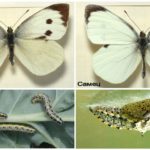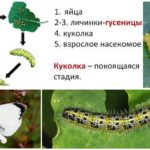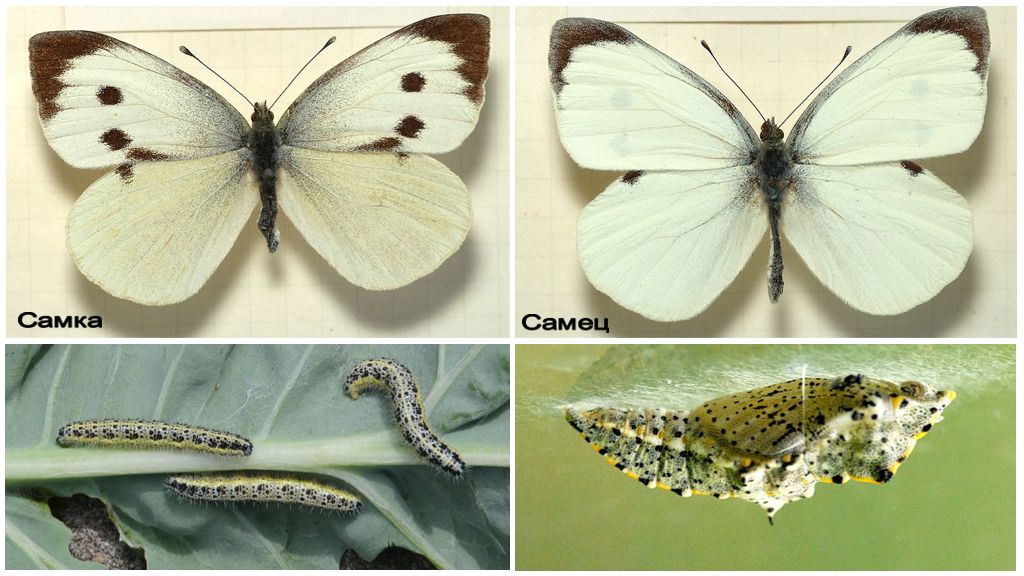Description and photos of caterpillars and cabbage butterflies
Content
- Female and male cabbage
- Butterfly Bowl Development Cycle
- Butterfly Cabbage
The cabbage butterfly is a daytime representative of the order Lepidoptera insect class. Her other name - the white-haired girl symbolizes her color: white wings with small black dots in the center. White flowers can be seen already in the spring in April or May fluttering over the first green plants.
Interesting!
Some fans of Lepidoptera breed butterflies in their home aquariums. How long a cabbage butterfly lives in an artificial environment depends on the care. They eat at home they are the same plants as in nature.
But the cabbage soup butterfly became famous not because of its early appearance. It is a dangerous pest of vegetable gardens and vegetable plantations. Its larvae can damage a large part of the planting of vegetable crops in a season, although this is not the only what do the caterpillars eat. Particularly affected by the invasion of caterpillars cabbage beds. This explains why the insect was so named.
Appearance
Cabbage soup in its life cycle passes through several stages of development. Adult butterfly is called imago. It has a small elongated body, a clearly defined head with eyes located on it, a mouthpiece, and long antennae. A steady balance position helps her to hold 3 pairs of legs.
Cabbage insect decoration is large wings of a milky or white color with a noticeable darkening along the edge. The upper wing of the females has a dark upper corner and two black specks in the middle.The upper edge of the lower wing adorns one speck. The lower wings of the female are yellow.
On a note!
The description of the cabbage butterfly is very similar to the appearance of another member of the family of whitefish - repnits. This butterfly also has white wings with black dots, but in size it is inferior to a cabbage pest.
Males have almost white wings with the same dark corner. The speck is present only on the lower wings in the same place as that of the females. The wingspan of both sexes is 50-60 mm. The photos of the cabbage butterfly visually demonstrate the external differences and help determine the sex of the insect.
Reproduction and development of all stages
The mating period falls on the first warm days of spring. For laying eggs, the female chooses cruciferous weeds. These include:
- shepherd's purse;
- colza;
- sverbiga;
- ikotnik;
- Weida dyeing.
A white cabbage butterfly makes an egg laying on the back of a leaf. During its short life, one female is able to lay 200-300 eggs. The average life of the moth in the adult stage is a month. After 7-10 days bright yellow larvae appear from the clutch - the second stage of insect development. The length of the caterpillars is 3-4 cm. They actively eat the leaves of plants and increase in size.
Every 5-7 days, the caterpillar of a cabbage butterfly molts. During its lifetime, the larva passes 4 molts. As it develops, it changes its color to a bright green with a blue tint. In the photo of cabbage caterpillars, yellow and black dots are visible on the sides of the body. At the final stage, the caterpillar crawls off the forage plant in search of a secluded place for pupation. So many do caterpillar species.
If the process of pupation occurs during the warm period of the year, after a couple of weeks a new butterfly appears from the pupa. Under favorable conditions in the southern regions for the season appears up to 4 generations of cabbage. Pupae can be seen attached to wooden fences, sheds, trunks of large plants.
On a note!
The yellow-green pupa of the cabbage at the end of the summer no longer turns into an adult. The life processes of the pupa pass into diapause, and it remains to wait for the spring in this state. And with the first warm spring days, the transformation resumes and a butterfly emerges from the cocoon.
Eating larvae and adults
The second and third generation of insects become a real disaster for gardeners and gardeners.The first month of summer is most favorable for breeding the offspring of a cabbage butterfly. The favorite insect forage crops appear in the garden:
- cabbage;
- radish;
- turnip;
- horseradish;
- turnip;
- radish;
- garlic;
- capers
Egg laying most often leaves the pest on the back of the leaves of these vegetable crops. The emerged caterpillars begin to actively feed on juicy young leaves. First, they eat the outside, then move to the central part. By damaging the leaves of vegetable crops, the caterpillars disrupt photosynthesis in the plant, thereby causing irreparable damage to the future harvest.
On a note!
When the larvae eat cabbage leaves to the base, they go to the inner leaves of the cabbage. This leads to the destruction of the whole plant.
Adult whitefish does not damage the vegetation. Cabbage butterflies eat nectar and pollen of wild flowers:
- dandelion;
- chamomile;
- alfalfa;
- coltsfoot;
- Sivets meadow
The length of the life span of an adult butterfly depends on weather conditions. Optimal for it are warm dry windless days with an average temperature of 20-25 degrees Celsius.This explains why many cabbage moths can be seen on vegetable plantations in the southern regions.
Interesting!
Cabbage beds are not such homebodies as they are considered. Entomologists have repeatedly observed the mass migration of butterflies. It is noticed that from the southern regions they fly to the north in the summer. They move along a clearly defined route and even obstacles will not force them to deviate from the chosen direction. In calm weather, the cabbage speed varies in the range of 7-14 km per hour. In the presence of wind, butterflies can overcome up to 36 km in an hour.
Butterfly cabbage: harm or benefit
The beauty of the insect can not be compared with the consequences that the gluttony of the caterpillars of the cabbage whitefish leads to. With each new generation, it damages entire vegetable plantations. People learned fight cabbage soup at different stages of its development.
The fight against pests is to spray the crops at an early stage after transplanting the seedlings into the ground. For processing vegetables developed special tools that can be purchased at the store. Also gardeners apply folk remedies for cabbage.
Interesting!
In addition to cabbage caterpillars, cabbage leaf beetles are also pests of cabbage beds. Their larvae and adults actively destroy the foliage of garden plantings.
An adult moth butterfly can be useful in nature. Fluttering from flower to flower in search of food, she carries on her paws pollen. In this way, it pollinates many plants.











